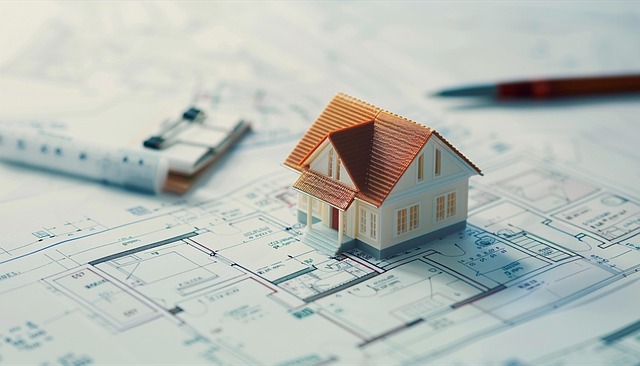Tenant turnover is a significant challenge in real estate, but proactive property management can mitigate this by focusing on preventive measures and excellent communication. Regular inspections, swift issue resolution, and tailored policies enhance tenant satisfaction and retention. This approach reduces vacancy periods, lowers costs for managers, and ultimately benefits property owners financially.
Key strategies include maintaining open lines of communication, hosting community events, leveraging data insights, and adapting practices based on performance metrics. By adopting these proactive measures, real estate managers can foster strong landlord-tenant relationships and ensure properties remain competitive in the market.
In today’s competitive rental market, minimizing tenant turnover is paramount for property managers. Understanding and addressing the root causes of tenant movement can significantly reduce costs and enhance property value. This article explores how proactive property management acts as a game-changer, focusing on strategies that go beyond reactive responses. From identifying tenant needs to implementing effective communication, we’ll uncover key practices proven to foster satisfied residents, ultimately leading to lower turnover rates.
- Understanding Tenant Turnover and Its Impact
- The Role of Proactive Property Management Strategies
- Key Practices to Reduce Tenant Turnover
- Measuring Success and Continuous Improvement
Understanding Tenant Turnover and Its Impact

Tenant turnover refers to the rate at which tenants move out of a property and are replaced by new ones. It’s a significant metric in real estate and property management, as high turnover can lead to financial losses, increased vacancy periods, and lower overall property value. When tenants leave, it often results in extra work for property managers, including marketing efforts to find new occupants, time-consuming inspections, and potential repairs or renovations.
Proactive property management plays a pivotal role in reducing tenant turnover. By anticipating and addressing tenant concerns before they become issues, property managers can foster a positive living environment. This involves regular communication, prompt maintenance responses, and implementing policies that cater to tenants’ needs and preferences. Such strategies ensure tenants feel valued and satisfied, encouraging them to stay longer, thereby minimizing the frequency of vacancies and the associated costs.
The Role of Proactive Property Management Strategies

Proactive property management plays a pivotal role in fostering tenant satisfaction and retention. Unlike reactive approaches that address issues only after they arise, proactive strategies anticipate potential problems and take preventive measures. This involves regular inspections to identify and rectify maintenance issues before they disrupt tenants’ lives, as well as quick responses to tenant requests and concerns. By maintaining a safe, comfortable, and well-maintained living environment, landlords can build strong relationships with their tenants, encouraging them to stay longer.
Additionally, proactive management includes staying updated on market trends and local regulations to ensure properties remain competitive and compliant. This may involve offering attractive amenities, implementing efficient communication channels, and providing excellent customer service. Such strategies not only enhance the living experience but also reduce the financial burden of high tenant turnover rates for property owners.
Key Practices to Reduce Tenant Turnover

Proactive property management is a game-changer when it comes to reducing tenant turnover, ensuring stable and satisfied rental communities. By implementing key practices, property managers can create an environment that fosters long-term tenancy. One of the primary strategies involves maintaining open lines of communication with tenants, addressing their concerns promptly, and making them feel valued. Regular check-ins, whether virtual or in-person, allow property managers to identify potential issues early on, such as maintenance problems or rent payment difficulties, enabling swift resolution.
Another critical practice is providing excellent customer service by offering prompt and efficient responses to tenant inquiries and requests. This includes timely repairs and maintenance, ensuring the property remains well-kept and comfortable. Additionally, proactive managers create a positive living experience through community events, fostering a sense of belonging and encouraging tenants to stay. By combining these practices with a data-driven approach to understand tenant preferences, property managers can proactively tailor services, making each resident feel unique and appreciated, ultimately reducing turnover rates significantly.
Measuring Success and Continuous Improvement

Measuring success in proactive property management is key to understanding its impact on tenant retention and overall satisfaction. By setting clear metrics, such as reducing tenant turnover rates by a certain percentage or achieving higher satisfaction scores through regular surveys, property managers can gauge the effectiveness of their strategies. These measurements provide valuable insights into what’s working well and where there’s room for improvement.
Continuous improvement is an integral part of proactive property management. Regularly reviewing performance data, analyzing tenant feedback, and adapting management practices accordingly ensure that properties remain competitive and appealing. This iterative process allows for staying ahead of market trends and tenant expectations, ultimately contributing to long-term success in retaining a stable and satisfied tenant population.
Proactive property management is a powerful tool in reducing tenant turnover, fostering a stable and satisfied resident base. By implementing key practices outlined in this article, such as regular communication, prompt maintenance, and personalized services, property managers can create an environment that meets tenant needs and expectations. Continuous improvement, driven by measuring success, ensures these strategies remain effective in today’s competitive rental market. Embracing proactive management is not just a strategy; it’s a commitment to building strong communities and ensuring long-term tenant satisfaction.




